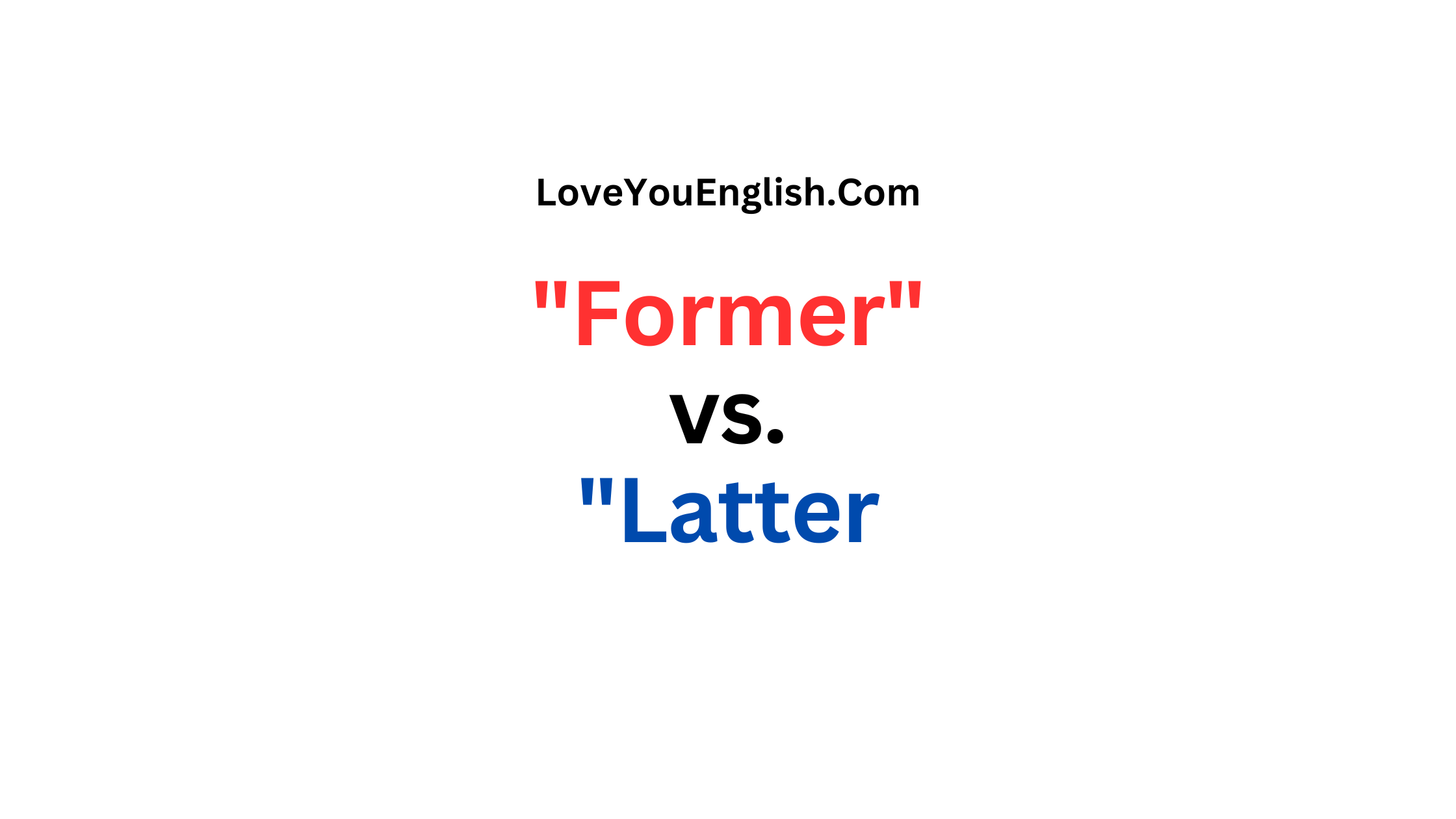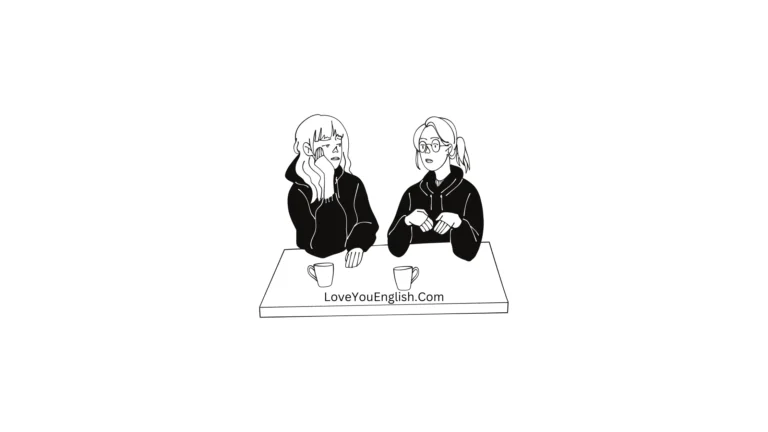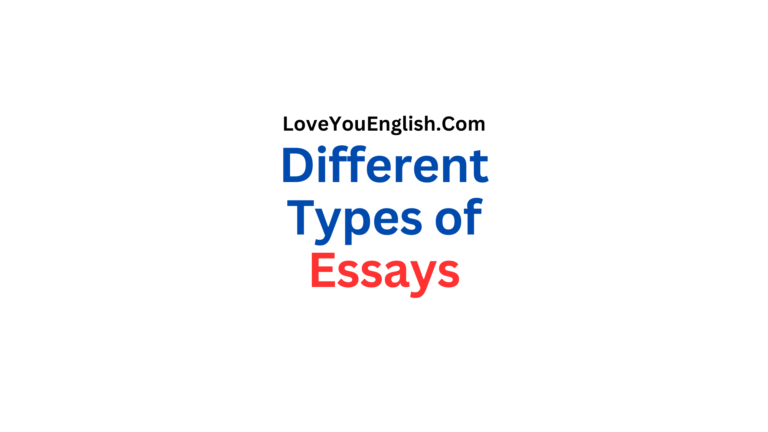When to Use “Former” vs. “Latter,” With Examples
In the wide world of the English language, some word pairs can confuse even the most experienced writers.
One of these tricky pairs is “former” and “latter.”
Although they might seem simple, these words have specific meanings that, if used incorrectly, can lead to misunderstandings or unclear writing.
I will help clarify how to use “former” and “latter,” giving you a better grasp of what they mean, how to use them correctly, and what mistakes to watch out for.
Understanding “Former” and “Latter”
Before we get into the details of how to use these words, let’s define them clearly:
Former: This word refers to the first of two items or people mentioned.
Latter: This word refers to the second of two items or people mentioned.
It’s important to remember that you only use these words when talking about two things that have already been mentioned in a sentence or paragraph.
They help you avoid repeating yourself and make your writing smoother and more elegant.
Basic Usage and Examples
To understand how to use “former” and “latter,” check out this simple example:
“Between coffee and tea, I prefer the former.”
Here, “former” means coffee because it was the first item mentioned.
If we switched to “latter,” the meaning would change:
“Between coffee and tea, I prefer the latter.”
Now, it means that tea is the preferred choice since it was mentioned second.
Let’s look at a more detailed example to see how they work:
“The research looked at how exercise and diet affect weight loss. The former was found to be better for building muscle, while the latter was more effective for losing overall fat.”
In this example, “former” refers to exercise, and “latter” refers to diet.
Using these terms helps the writing flow better without needing to repeat the words.
Understanding the Idea: Using “Former” and “Latter” with More Than Two Items
Even though “former” and “latter” are usually meant for two things, you can use them for lists that have more than two items too.
In these situations:
“Former” points to the first item in the list.
“Latter” points to the last item in the list.
For instance:
“The store had apples, bananas, and oranges. The former were discounted, while the latter were sold at a higher price.”
In this example, “former” means apples, and “latter” means oranges.
But be careful!
This can get confusing, especially with longer lists. It’s usually better to name the items directly when you have more than two.
More grammar topics:
- Understanding Plural Nouns: Rules and Examples
- The Difference Between Tell, Say, Speak, Talk
- Understanding the Difference Between Nouns & Pronouns
Common Errors and How to Fix Them
Using “Former” or “Latter” Without Clear References
A common mistake is using these words without making it clear what you’re talking about. For example:
Wrong: “The former is always better.”
This makes the reader think, “The former what?”
Always make sure to mention the two items you’re comparing before using “former” or “latter.”
Right: “When deciding between quality and cost, the former is always better.”
Mixing Up “Former” and “Latter”
Another mistake is accidentally switching these two words, which can change what you mean.
Wrong: “Between the sun and the moon, the latter shines during the day, while the former lights up the night.”
Right: “Between the sun and the moon, the former shines during the day, while the latter lights up the night.”
To avoid this mistake, always check your wording, especially in tricky sentences.
Using “Former” or “Latter” with More Than Two Items
Even though we can use “former” and “latter” when talking about lists with more than two items, it’s usually better to avoid it to keep things clear.
Confusing example:
“The store sells books, magazines, and newspapers. The latter are delivered daily.”
Clearer example:
“The store sells books, magazines, and newspapers. The newspapers are delivered daily.”
Overusing “Former” and “Latter”
These words can help us avoid saying the same thing over and over but using them too much can make our writing sound weird or too formal.
Sometimes, it’s easier and clearer to just say the names of the items again.
Overuse example:
“John and Mary went to the park. The former played basketball, while the latter read a book. Later, the former joined the latter for a picnic.”
Better example:
“John and Mary went to the park. John played basketball, while Mary read a book. Later, they joined each other for a picnic.”
Advanced Applications and Stylistic Considerations
Using “Former” and “Latter” in Academic Writing
In school essays and research papers, being precise is really important.
“Former” and “latter” can help us refer back to ideas or studies without repeating ourselves too much.
For example:
“The research compared two methods: qualitative interviews and quantitative surveys. The former gave detailed insights into personal experiences, while the latter provided wider statistical analysis.”
Using “Former” and “Latter” in Legal Documents
In legal writing, it’s often necessary to refer back to people or sections mentioned earlier.
“Former” and “latter” can be helpful here, but we need to make sure everything is super clear.
For example:
“The contract explains the duties of both the employer and the employee. The former agrees to pay fairly, while the latter promises to do the job as described.”
Creative Writing and Literary Devices
In creative writing, the terms “former” and “latter” can help create balance or highlight differences.
For example, in a story, you might read:
“Joy and sorrow battled within her. The former sang of dreams, while the latter howled for revenge.”
This way of writing makes the emotions of the character feel more intense and poetic.
Journalistic Writing
In journalism, reporters often need to refer back to different sources or events quickly.
Using “former” and “latter” can be really helpful:
“The governor and the fire chief held different press briefings. The former talked about funding issues, while the latter focused on recent fire incidents.”
Alternatives to “Former” and “Latter”
Even though “former” and “latter” are useful in formal writing, there are often clearer options, especially in casual writing:
Specific Referents:
Instead of saying “former” or “latter,” just repeat the items you’re talking about. This is usually the easiest way to be clear.
“The First” and “The Second”:
For a more relaxed alternative, you can say “the first” and “the second.”
Example: “Between cats and dogs, the first are my favorite, but the second are more playful.”
“The First” and “The Second”:
This pair is useful when the difference between the two things isn’t as important as the comparison being made.
Example: “I have two cats. The first is playful, while the second is shy.”
Demonstrative Pronouns:
“This” and “That” can sometimes replace “first” and “second,” especially in casual conversations or informal writing.
Example: “I could either go for a walk or stay home. This option seemed healthy, but that one was more fun.”
Conclusion
Learning how to use “former” and “latter” can make your writing clearer and more stylish.
When you use these words correctly, they can help your sentences flow better and avoid repeating yourself.
But always keep in mind that being clear is the most important thing.
If using “former” or “latter” makes things confusing, it’s usually better to choose simpler words.
Context matters a lot when it comes to language.
In serious writing, like essays or legal documents, these terms can be really helpful for keeping things short and professional.
But in more relaxed writing, it might be better to use easier words.
In the end, deciding to use “former” and “latter” depends on who will read your work, how formal it is, and how clear you want to be.
With practice, you’ll get a good feel for when these words improve your writing and when they might make things harder to understand.
Always remember that good communication is about more than just following rules; it’s about sharing your ideas in a way that connects with your readers.
Whether you decide to use “former” and “latter” or stick with simpler options, your main goal should be to express your thoughts clearly and engagingly.
By getting to know how “former” and “latter” work, you’ve added some useful tools to your writing skills.
Use them carefully, and you’ll see your writing become sharper and more precise.







